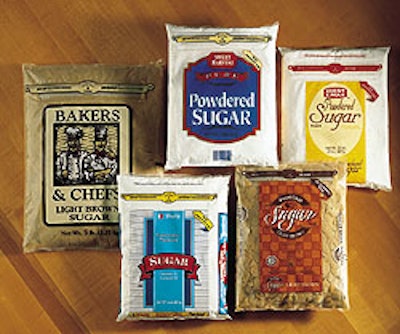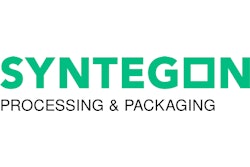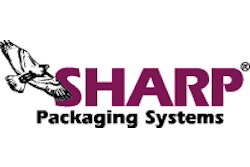Reclosable zipper packaging has become so prevalent in recent years that some may view it as a commodity. Not U.S. Sugar. The Buffalo, NY–based private-label sugar producer/packager expects that this year’s overall company sales will double from two years ago, when it first introduced zippers to its plastic pillow bags of powdered and brown sugars.
Until mid-’99, U.S. Sugar used traditional nonreclosable flexible plastic bags. But when one of its key customers, Sam’s Club, requested zippers for its 5-lb bags, U.S. Sugar wisely acquiesced. Today, U.S. Sugar has switched nearly all of its customers to zippered bags. This affords U.S. Sugar, and presumably its customers, with a competitive advantage.
“With one exception, nobody else is producing powdered and brown sugars with zippers,” states Bill McDaniel, U.S. Sugar’s president and CEO. “And nobody else is doing it at all in private– label sugars.”
U.S. Sugar sources Inno-Lok® bag rollstock with zipper applied from Reliable Poly Packaging (Beverly, MA). The 2-mil film of blended polyethylene grades comes from various vendors. Reliable uses equipment from Hudson-Sharp Machine (Green Bay, WI) to apply to the film the low-density PE zipper material from Minigrip/Zip-Pak (Manteno, IL). That is done after the machine cuts a perforation to the film that later allows consumers to easily open the film, pull open the zipper, and gain access to the sugar.
The interlocked zipper is attached transversely (see sidebar) on the inside of what becomes the front panel of the bag. The rollstock is vertically formed, filled, and sealed by U.S. Sugar on equipment from Robert Bosch (Bridgman, MI).
Addressing costs
“I wish I could say [adding the zipper] was my brilliant idea, but Sam’s Club loved the Inno-Lok zipper,” recalls McDaniel. “They were carrying frozen meals and vegetables packaged with the zipper, and they suggested it to us.”
While Sam’s served as the catalyst for adding the zipper, U.S. Sugar didn’t make the decision lightly. “The additional cost [of using zippered film] is more than double the cost of a plain plastic bag,” McDaniel admits.
The added cost also concerned U.S. Sugar customers. “Initially we faced some price resistance from private-label buyers because they want to keep their costs down,” he explains. “The typical reaction was, ‘Yeah, we love reclosable zippered bags, as long as you can give them to us at the same price.’ We responded that we could come pretty close, but what it ultimately meant was making the decision to ‘investment-spend’ in the hopes of gaining new business. And we’re expecting to double our sales this year versus our first year in the zippered bags.”
Why pre-zippered rollstock?
Of course, zippers can be applied in-line or ordered as part of a pre-made bag, or ordered as rollstock. U.S. Sugar opted for the latter method.
“We tried pre-made stand-up pouches with zippers about seven years ago, and it was extremely costly,” McDaniel remembers. “We did some only for a test, and we filled them semi-automatically. It was a tedious process, and we would have had to buy new equipment [to produce the pouches commercially].”
He sees two other drawbacks to marketing sugar in stand-up pouches, besides the equipment investment it would require. “If you have a snack product and you’re charging two dollars for an eight-ounce bag, you can kind of bury the packaging cost in there,” McDaniel speculates. “But it’s not like that in the sugar category, where there’s not much room to do anything like that. I don’t think the consumer would be willing to pay enough of a premium,” to justify the investment. The second drawback, he continues, is that “pouches hog a lot of shelf space. Retailers would have to stock shelves more often. With flat bags, they can just lay them on the shelf and they better fill that space. I have nothing against stand-up bags, but on a commodity item like sugar, it’s tricky.”
In-line zipper application would have been too complicated, McDaniel believes. “We’re very aware that there would have been a speed trade-off attaching a zipper in-line. If you run 20 percent slower, you’re going to have 20 percent less production, and that could hurt us during our peak season when we are running around the clock. By using Inno-Lok, we can keep running at the same speeds we always have, and with the same output.”
He also believes, “There would have been additional capital costs to add the equipment to apply zippers, and then there’s the degree of difficulty in synchronizing everything so the zipper is applied perfectly.”
In the end, McDaniel says, “We selected pre-zippered rollstock because we’ve got a dusty environment due to the powdered sugar. Brown sugar isn’t too bad because it clumps, but we were particularly concerned with powder flying around the packaging line. Powder creates challenges because it’s fine and gets into the nooks and crannies of packaging machinery. It’s like a dust and is not only abrasive to the eyes but can cause wear and tear on equipment.”
McDaniel points out that the powder is challenging to fill even with pre-zippered rollstock. “But we haven’t made our lives more complicated by trying to apply zippers in-line.”
New vf/f/s equipment
Reliable Poly Packaging supplies the pre-zippered rollstock. “They’ve spent a lot of time with us and know of our issues. All we specify is that the film run well on our equipment,” McDaniel notes. U.S. Sugar runs brown sugar at speeds of 40 to 60 bags/min, depending on size, and at 25 to 40 bags/min for powdered sugars. The private-label sugar packager markets the product primarily in 1-, 2-, 4-, and 5-lb sizes, with the 2-lb version ordered most frequently.
Bags are produced on five Bosch vf/f/s machines, one of which was added less than a year ago. The first of the five has functioned at the 300ꯠ-sq’ Buffalo facility for about four years. “These five machines replaced 13 older units,” says McDaniel. “We replaced all our older lines because there’s a better than three-to-one advantage in speed with the state-of-the-art Bosch units. They give us excellent flexibility because they can run virtually any bag size. But we do run the different types of sugars on different machines, with three filling powdered sugar and two brown sugar.”
The increased speed of the Bosch units provides U.S. Sugar not only with internal efficiencies but also with a competitive advantage. “I think most of our competitors still have older, slower equipment,” McDaniel says.
The equipment easily accommodated U.S. Sugar’s switch to the pre-zippered material. “All we had to do was make minor modifications for the zippered rollstock,” McDaniel says with satisfaction. “We needed more clearance between the forming collar and the tube to get the zipper to run smoothly, so we just needed to use different forming sets.”
Future looks bright
McDaniel explains that sugar is dominated by regional marketers “because it’s a low-margin category and there are regional refiners. It’s hard to compete beyond a certain radius because of freight costs. We have customers located far and wide, but on a regular basis we compete within about a 600-mile radius.”
U.S. Sugar’s customers sell primarily in the Northeast. The company sells to Sam’s Club stores located nearly everywhere, except on the West Coast. “With the zipper pack in our bag of tricks, we think we can expand geographically,” McDaniel says.
At this point, the company produces exclusively for private-label accounts. “We’ve sold under our own brand in the past, but basically there’s not room for a third brand on the shelf,” he believes. “Retailers want one leading brand at the higher price point and their own brand at a lower price point.” On a positive note, he says, “Private-label brown and powdered sugars overall are approaching a 50-percent market share nationwide, and so we’re in a growth segment.”
That, of course, bodes well for U.S. Sugar’s future. “We’re getting additional orders for zippered bags from new customers and incremental business increases from existing customers,” McDaniel says. “We’re happy with our decision to add zippers, and we see their use continuing to increase in the future.
“We have many opportunities now in the retail market, but we’re also looking into the foodservice area as a means of expansion,” he continues. “We have an executive vice president with experience in that area, and we have the capability to make larger sizes for that market, but that’s on the back burner for now.”
That’s because the company is too busy making proposals to retail buyers who want to deliver the reclosable zipper convenience on their own packs. It’s a situation the late Jackie Gleason might describe with his signature phrase, “How sweet it is!”
See sidebar to this article: Zipper application is outsourced



























